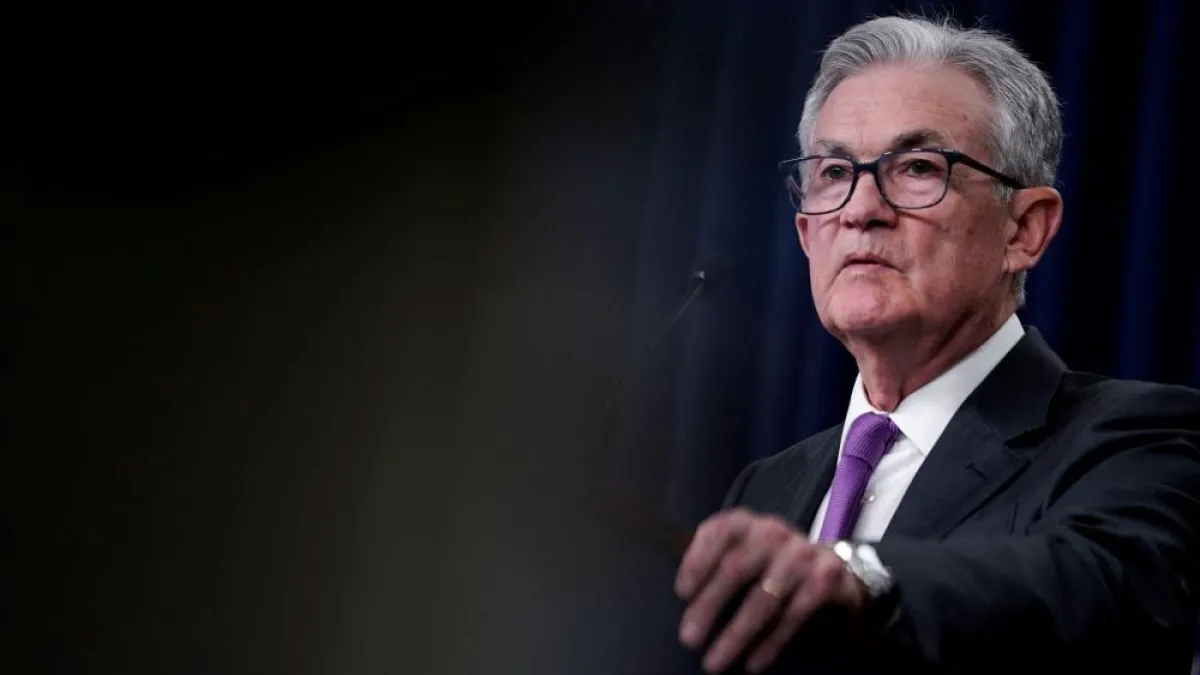
The Federal Reserve on Wednesday held its benchmark interest rate steady but warned about the potential economic harm from President Donald Trump’s trade war.
“If the large increases in tariffs that have been announced are sustained, they are likely to generate a rise in inflation, a slowdown in economic growth and an increase in unemployment,” Federal Reserve Chairman Jerome Powell said at an afternoon news conference.
Rising uncertainty: In a statement issued at the conclusion of its latest meeting, the rate-setting Federal Open Market Committee said the economy is still in good shape, largely dismissing the recent report that showed the economy contracting slightly over the first three months of the year. The Fed panel said the economy continues to expand at a “solid pace” amid low unemployment and a sturdy labor market. At the same time, Fed officials said the “risks of higher unemployment and higher inflation have risen” and “uncertainty about the economic outlook has increased further” since the committee’s last meeting in March.
The statement did not mention the primary driver of the rising risk and uncertainty — the dramatic tariff increases Trump imposed last month — but Powell issued his warning about the economic threat they pose in remarks to the press after the FOMC meeting.
A tough situation: Powell said Fed officials would wait and watch the data as they weigh the effects of the tariffs on both prices and employment. Although tariffs can be expected to raise prices and reduce employment, a combination known as stagflation, economic reports haven’t shown much stress yet, Powell said, and there is always a chance that new trade deals could soften the potential damage. That means the Fed is prepared to be patient.
“We don’t think we need to be in a hurry,” Powell said, repeating a line he has used over the last few months as the central bank has continued to evaluate its effort to bring inflation back to its 2% target rate. “It’s not a situation where we can be preemptive, because we actually don’t know what the right response to the data will be until we see more data.”
Still, economic conditions created by the tariffs may put the Fed in a tough spot in which its dual mandate to pursue price stability and maximum employment call for opposite policy actions: rate cuts to boost jobs and the economy, and rate hikes to combat inflation. “They’re in a bad situation,” William English, a former senior Fed adviser, told The Wall Street Journal. “If I were there, I would be suggesting that they stay put for now.”
Ignoring political pressure: Asked by a reporter if President Trump’s repeated calls for the central bank to lower interest rates, as well as personal criticism aimed at the Fed chief, made his job more difficult, Powell said it has had no effect.
“My whole focus is on and my colleague's focus is all on ... trying to navigate this tricky passage we're in right now, trying to make the right decisions,” he said. “That's what we think about day and night and this is a challenging situation and that's 100% of our focus right now.”
Powell also said Trump has not requested a meeting with him, and he would “never” request a meeting with Trump, since it’s not part of the proper role of the Fed chair. “I don't think it's up to a Fed chair to seek a meeting with the president, although maybe some have done so,” he said. “I've never done so, and I can't imagine myself doing that.”
What analysts are saying: University of Michigan economist Justin Wolfers noted that the Fed didn’t refer to stagflation by name, but that appears to be its main concern. “Never a good moment when your central bank says that it's worried about both higher unemployment and higher inflation,” he wrote on social media. “That's a problem that monetary policy alone can't solve.”
Many economists think that the Fed is unlikely to change its rate policy anytime soon, and probably not before September, but some worry that the central bank is waiting too long to respond to what appears to be a slowing economy. “The longer they’re on hold, the more they’re passively tightening,” George Goncalves, head of U.S. macro strategy at Japanese banking giant MUFG, told the Journal. Cutting rates later in the summer in response to a tariff-driven slowdown is “just too long of a wait,” he said. “You might lose that chance of really catching the economy.”
The problem, as Powell highlighted today, is that the Fed can’t be sure which way the stagflationary ball might bounce, so it’s not yet clear whether lowering rates to ease a slowdown or raising them to head off inflation would make more sense. Torsten Slok, chief economist at the Apollo Group, told the Associated Press that he’s worried about price hikes. “The bottom line is that inflation will be rising significantly over the next six months,” he said.